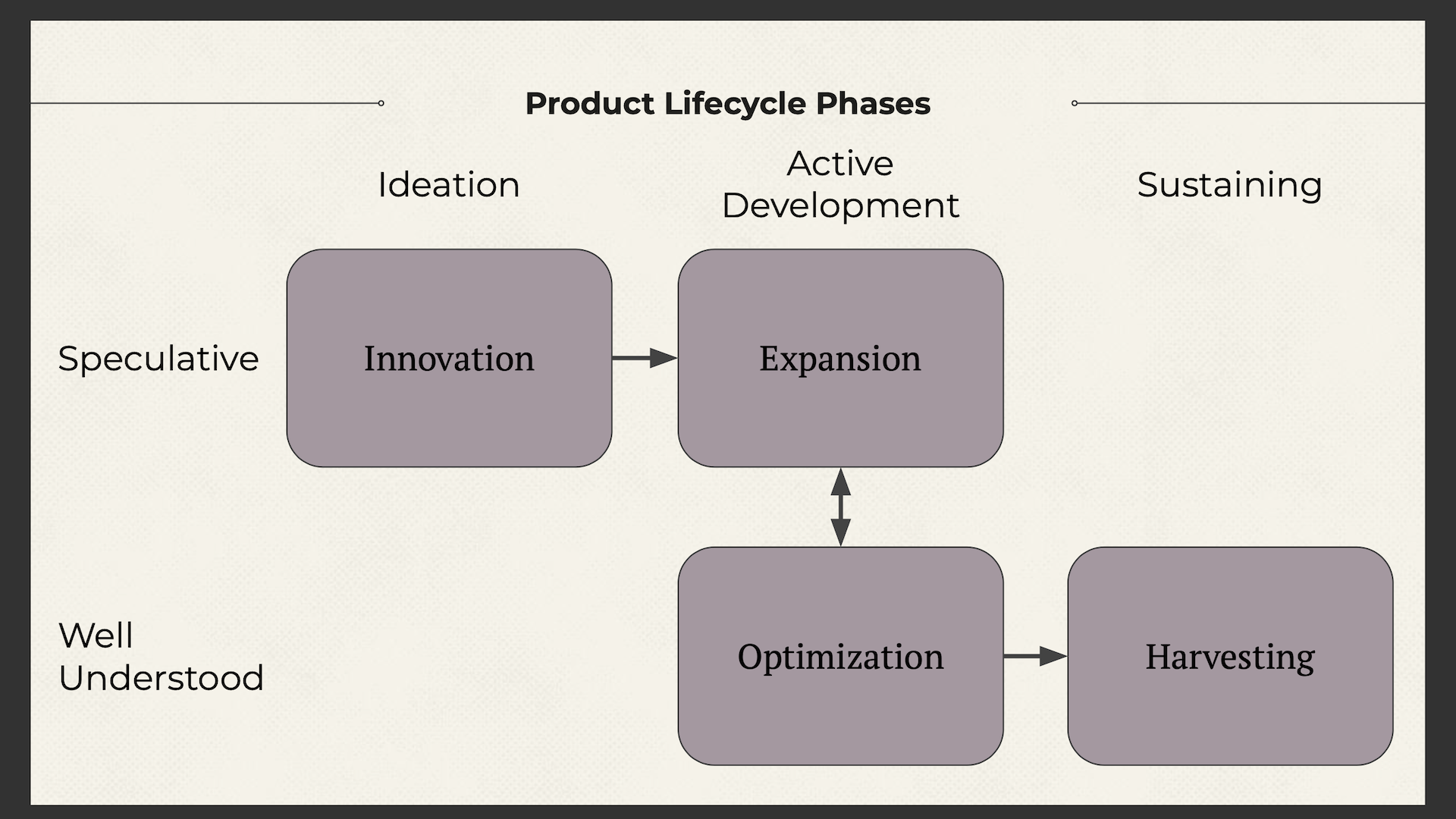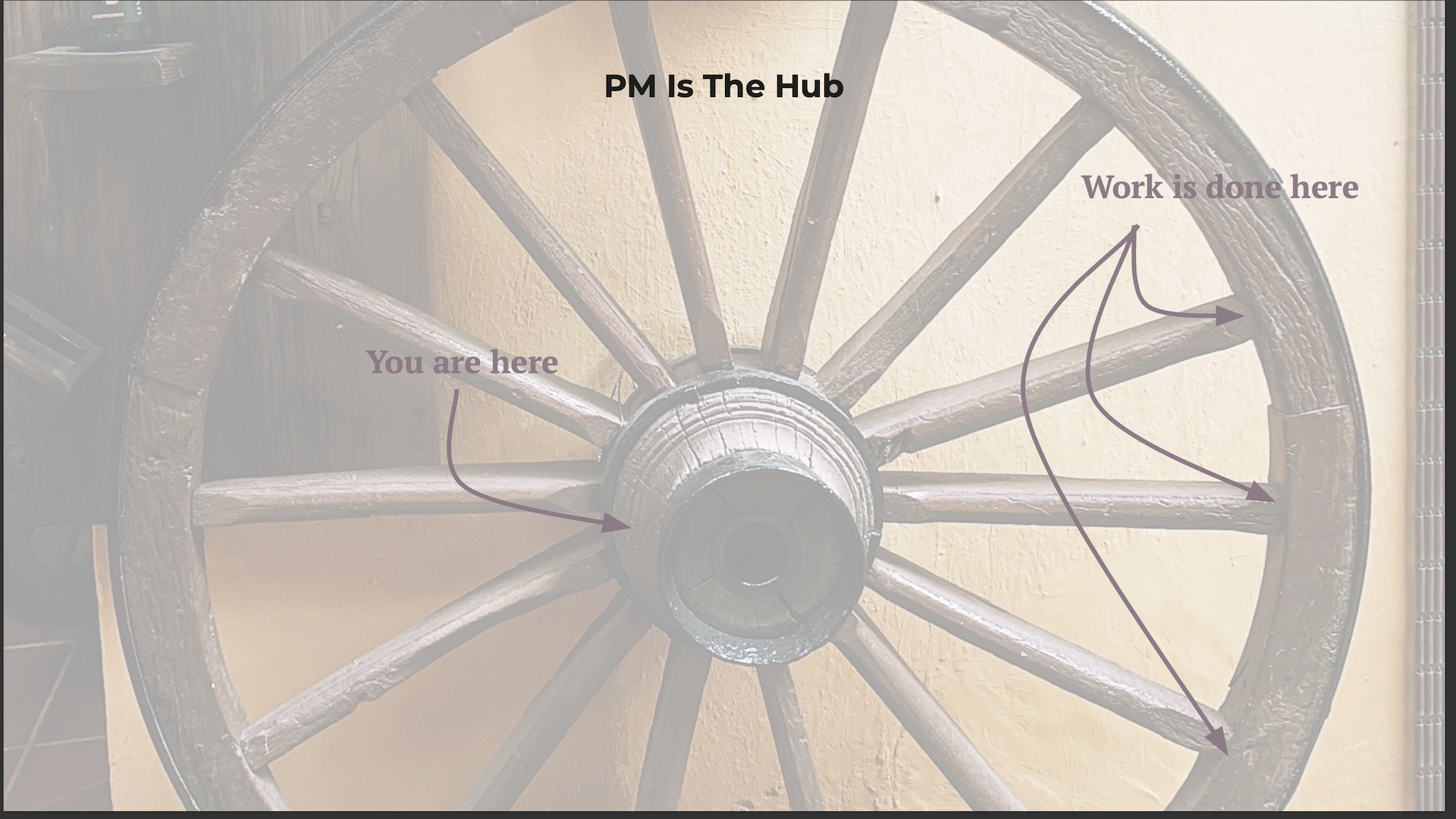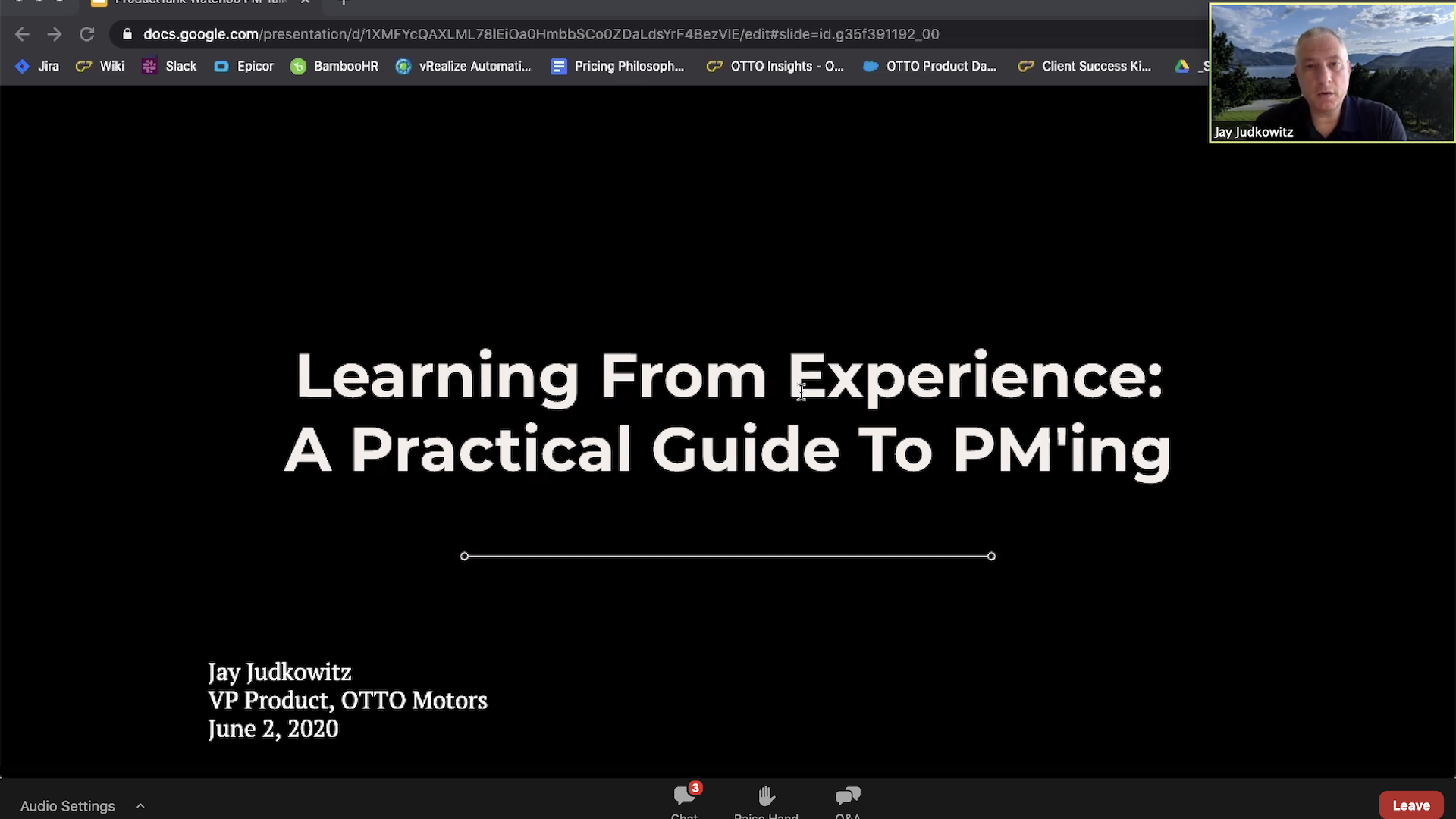When it comes to product management, experience is often the best teacher.
While you can go to school for user experience design or software engineering, the only education options for product management are the school of hard knocks.
But how can you get the most from a product management role without the bumps and bruises that often come with experience? That was the impetus for the latest ProductTank Waterloo virtual meetup, where Jay Judkowitz, vice president of product at Otto Motors, offered a practical guide to product management.
“Failure is often a more direct teacher,” said Judkowitz, who has been in product management for 16 years including stints at VMware and Google Cloud.
Prioritizing a roadmap and building a product strategy
One of the first issues product managers come up against is prioritizing a roadmap and a product strategy.
What makes building a roadmap hard, said Judkowitz, is not that you don’t have enough ideas — it’s that you have too many. But understanding the product life cycle phases and what matters right now for your product — whether it’s increasing customer satisfaction or supporting a new business model — will help ensure you don’t end up with buyer’s remorse. He uses an x/y axis for the product life cycles (innovation, expansion, optimization, harvesting). Along the x-axis are “ideation”, “active development”, and “sustaining”, while “speculative” and “well understood” run along the y-axis. Knowing where your product is on the axis makes it easier to know what to work on first.

As you move through each phase, you’ll face different market realities and have different goals, said Judkowitz. That will also help you build your roadmap. In the expansion phase, for example, you may be determining the key innovation for each release. But that doesn’t mean you want to solve all the UX problems in the world, said Judkowitz.
“Solve for one feature and then market the heck out of it,” he said.
There are, of course, some caveats:
- Some products are complex and have different phases. If that’s the case, know which part of the product you’re working on.
- If you’re cutting corners, you’re creating tech debt. Be aware of the tech debt you’re creating because you’ll eventually have to pay it off before you try to expand.
- Sometimes your product is not there for your own benefit. Judkowitz said he’s made the mistake of trying to innovate when all the people using the product really needed was to smooth out the rough edges and reduce friction. Recognize when that’s the case and give people using the product what they need rather than fancy tools or features they don’t want.
When you’re planning a release, Judkowitz said it’s important to know what phase the product is in as well as understanding the constraints that every product faces: features, cost, and time. Make a wish list that’s big but not ridiculous, he added.
“Don’t try to out-engineer engineering,” he said. Give them more than what you think they can do and let them come back with a list of what’s realistic. Then, cut features.
“Sometimes it’s better to think smaller and more incrementally,” he said.
It may sound simple, but when you’re building a product strategy, remember the company’s mission, said Judkowitz.
“You can have the best, most amazing idea, but if it doesn’t advance the company’s mission it’s not going to go anywhere,” he said.
The best product strategy comes from within the company’s mission.
Using metrics in product management
Metrics help inform and defend your decisions, justify future investment, and identify problems and quantify their impact, said Judkowitz.
Build evidence by running experiments and surveys. And have a north star metric — one thing that’s so important everyone can get behind it, he said. A north star metric clarifies what you’re trying to accomplish. With that shared understanding, everyone can work independently and get to the same place, he said.
Every time your north star metric goes up, it’s because your customers are happy. And when your customers are happy, your business grows, added Judkowitz.
But don’t just measure anything for your north star: make sure it’s linked to customer value. For their north star, Spotify measured how long customers were listening to music. The longer customers listened showed that they were getting value from Spotify.
Sometimes though your north star metric isn’t measuring anything linked to customer value, said Judkowitz. He pointed to a LinkedIn case study where the company thought that measuring endorsements people made or accepted would improve their business. But that wasn’t the case because the metric didn’t offer customer value.
Working the organization
When you’re in product management, it’s important to bring together different people across and up the organization. The role of product management often puts product managers in the centre of a hub, like a wheel, said Judkowitz. The whole point of the role of a product manager is to hold all the spokes together. When there’s too much pressure on one set of spokes, the product manager’s job is to absorb it and spread it across the other spokes so that the wheel keeps moving.

Work with other groups by giving favours, showing appreciation (even when you think they’re just doing their job), and advocating for people, he said.
If you’re dealing with other product managers on the team make sure you’re not isolating them. Get aligned. Understand the broader agenda. Are you competing for resources, such as marketing, with someone, Judkowitz asked? Are you duplicating work someone else has already done? Have situational awareness, he said, and understand the impact of your plans on someone else’s plans.
“Successful product managers have situational awareness and compromise when possible. When it’s not possible, you escalate,” he said.
While some may fear escalating, taking that step isn’t always a bad thing, said Judkowitz. It means you can’t agree and need a shared authority to help you and your counterpart come to a consensus. Go to your leadership together and tell them how you’ve tried to come to an agreement already, he said.
“The key is not to tell on anyone,” he said. Then let the leadership team help you fix it.
Judkowitz also shared advice for how product managers can manage their time (“serialize as much as possible,” he said) and lead.
“Act like the leader you want to be,” he said.
Advance diversity, equity, and inclusion, said Judkowitz. That means correcting microaggressions when they happen in the setting where they happen. That’s how you signal to everyone what’s tolerable and what’s not.
“As you grow and hire, you want your company to look like the community around you and your customers,” he said. “When you care about this, it changes your organization and people’s perception of you. That’s an important aspect of leadership.”





